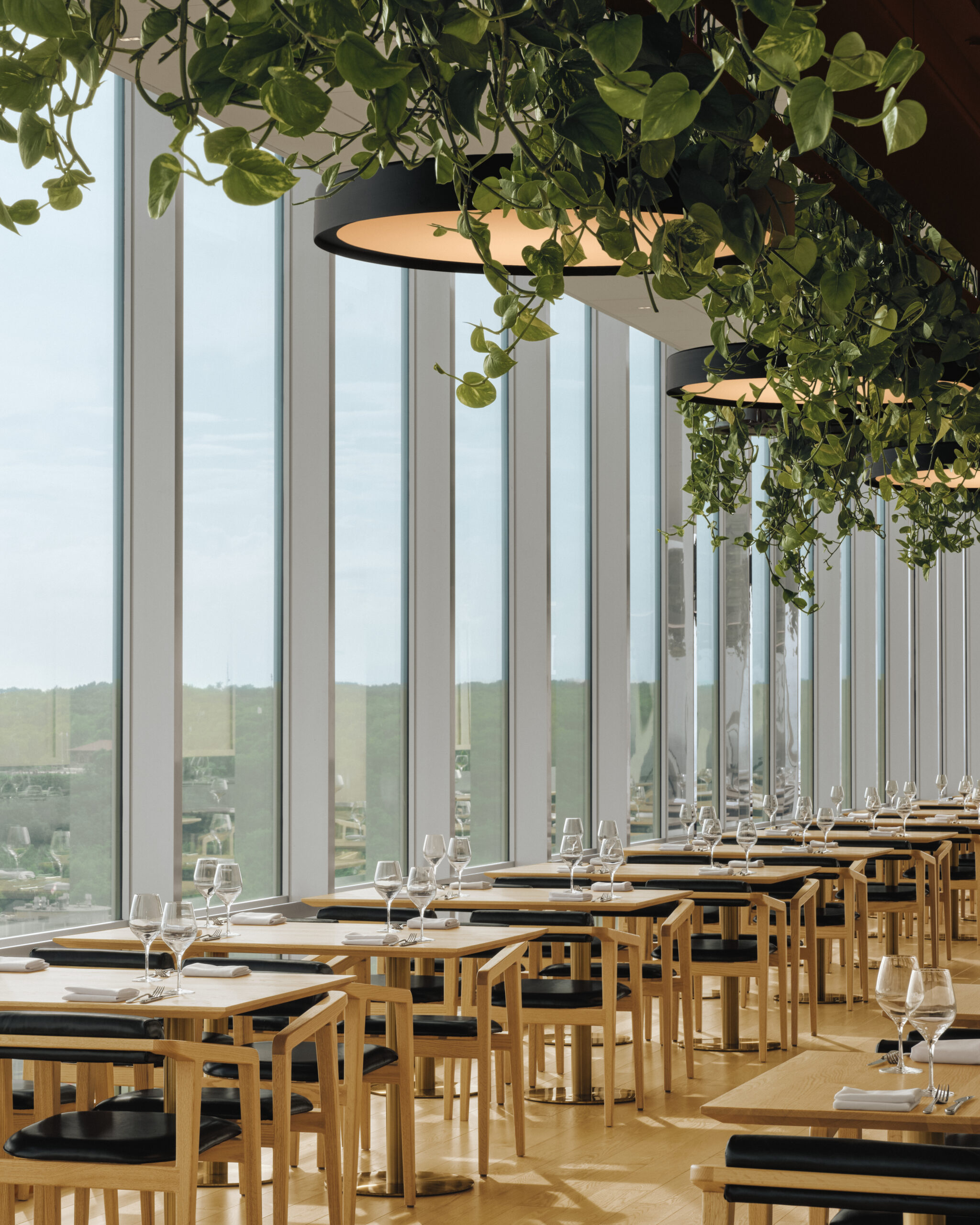-
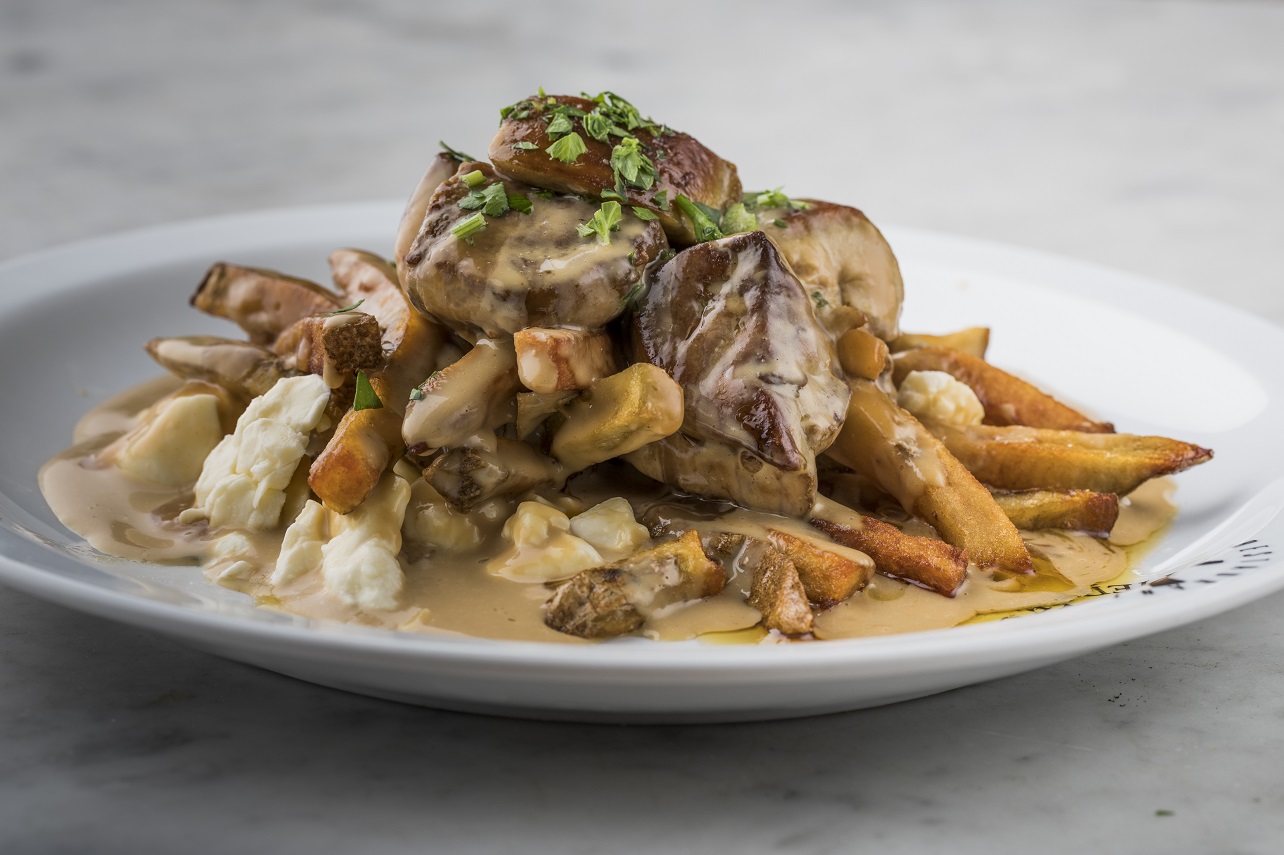
Au Pied de Cochon’s signature Foie Gras Poutine: Fries, cheese curds, brown gravy, and foie gras. It’s here that Chef Martin Picard helped elevate poutine to a delicacy in 2001. Photo by André-Olivier Lyra.
-

Fabergé’s Poutine Matinale (with fried chicken): This popular Mile-End breakfast spot dishes up a hearty breakfast take: hand cut breakfast potatoes, cheese curds, caramelized onions and peppers, hollandaise, and a fried egg. Photo courtesy of Fabergé.
-
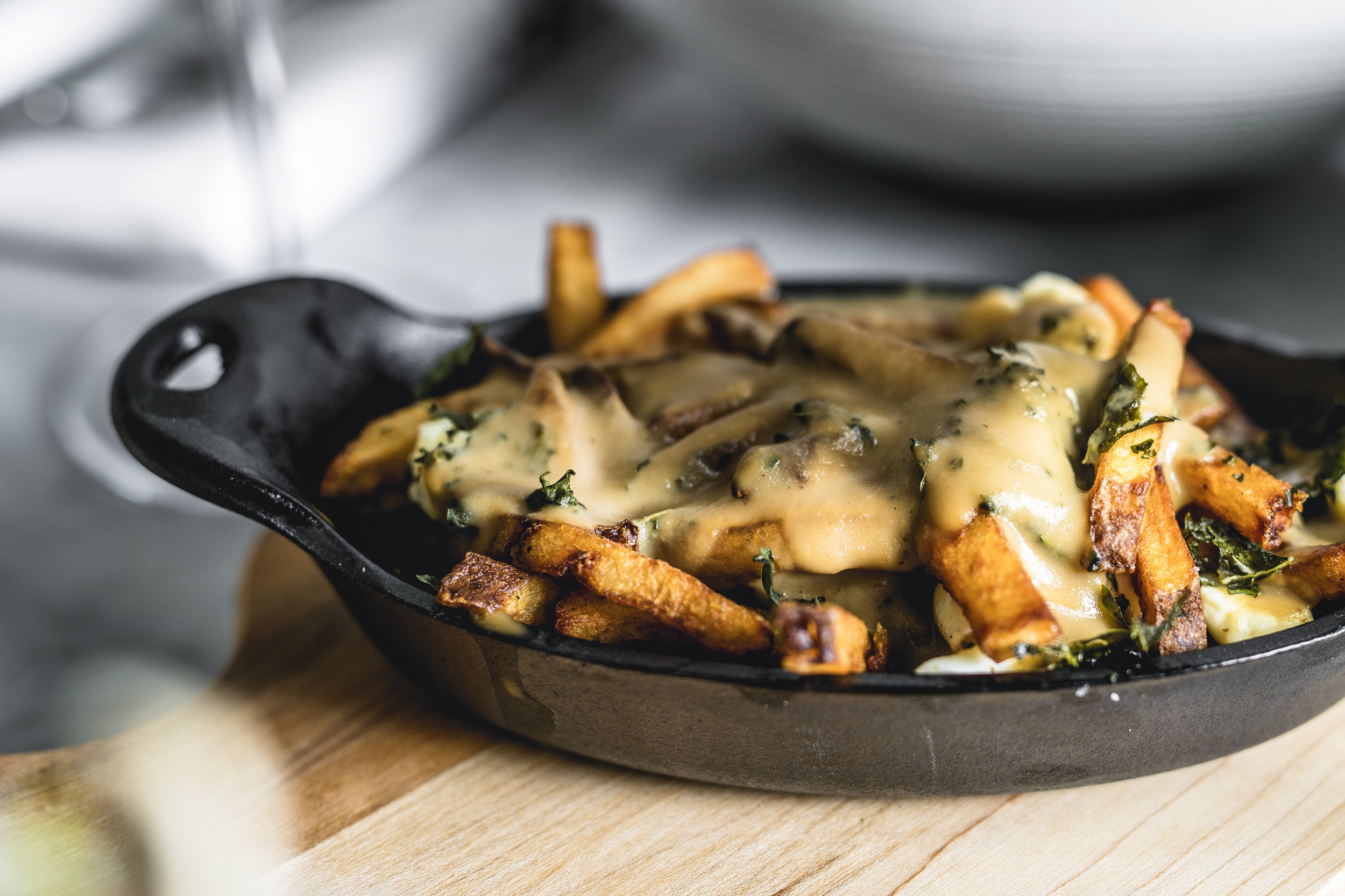
LOV’s Poutine: From Old Montreal, LOV offers a vegan poutine made from fries, miso gravy, kale chips, vegan cheese, with choice of organic cheese curds and sweet potato fries. Photo courtesy of LOV.
-

Le Boucan Smokehouse’s Pulled Pork Poutine: This bustling, low-key smokehouse on Rue Notre-Dame serves a poutine made from seasoned homemade fries, topped with Victoriaville sauce, fresh cheese curds, and BBQ pulled pork. Photo by Stéphane Lavoie.
-
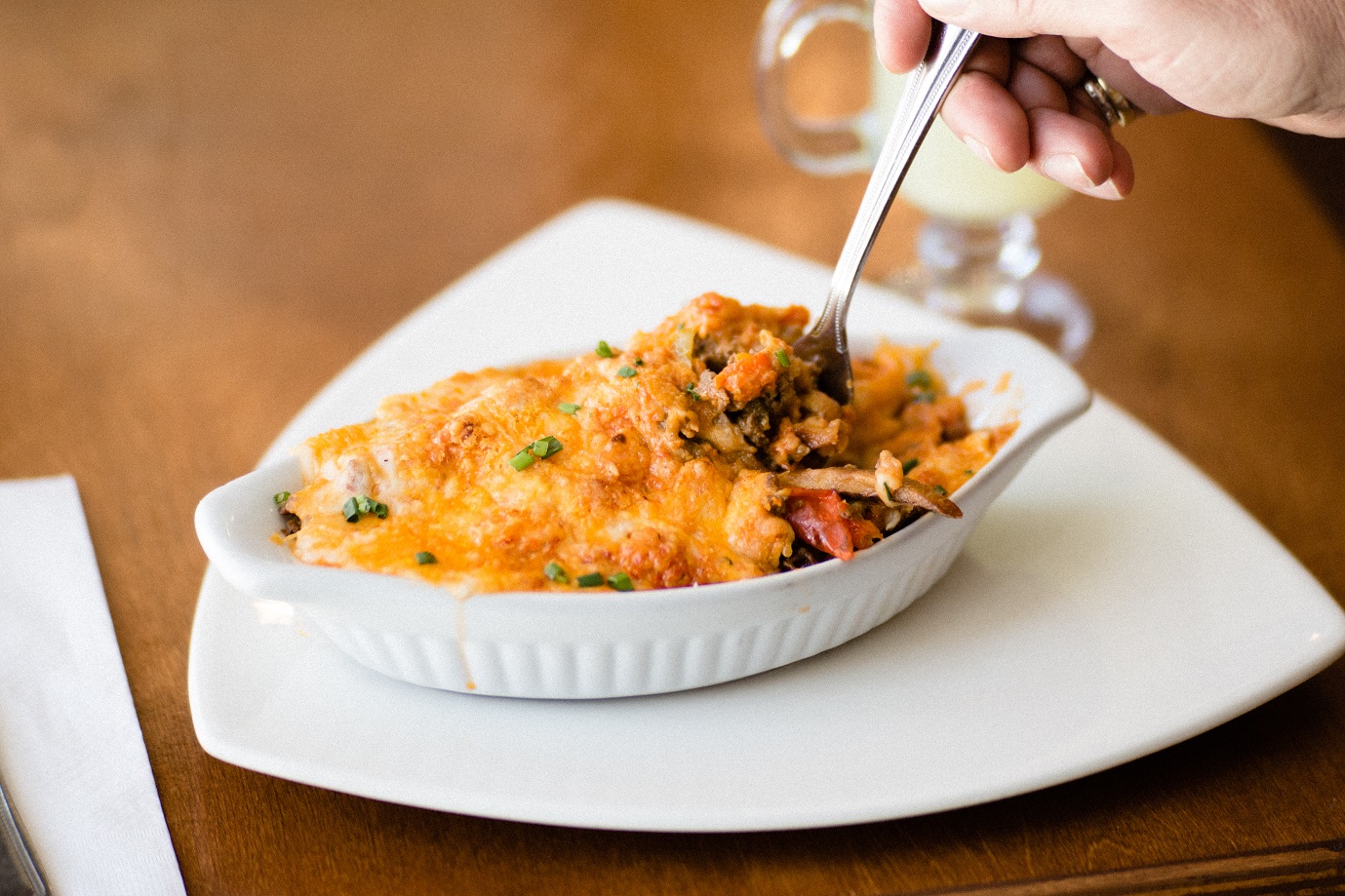
Bistro L’Enchanteur’s Poutine L’Enchanteur: Home-style fries baked with Swiss and goat cheese sauce, ground beef, and beer-cooked onions and peppers make up the Poutine L’Enchanteur from this quaint neighbourhood bistro in the heart of Villeray. Photo by Stéphane Lavoie.
-
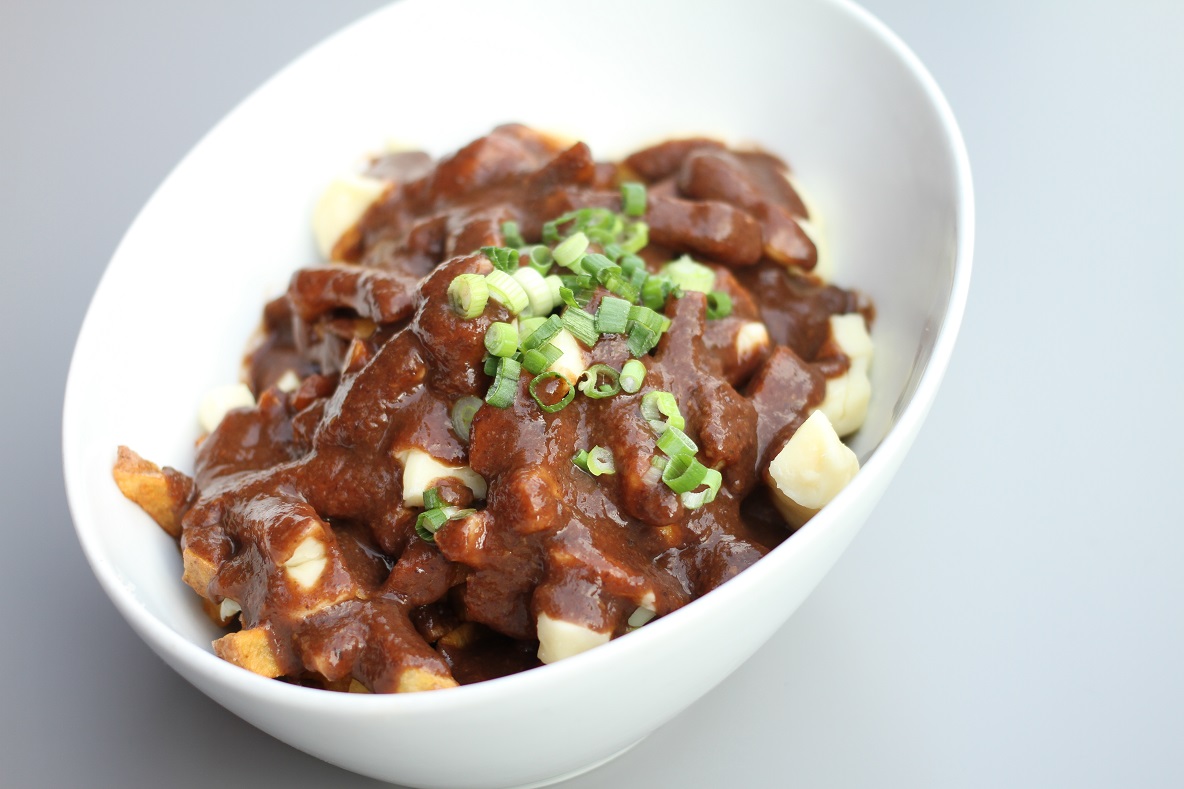
Lola Rosa’s Poutine Lola: Mexican-centric Lola Rosa’s vegetarian-friendly poutine features Yukon white potatoes with vegan gravy (mushrooms and black beans) and cheese curds. (Exclusive to Lola Rosa’s Avenue du Parc location). Photo courtesy of Lola Rosa.
Canada’s Poutine Controversy
And where to find Montreal's best renditions of the dish.
One of Canada’s top ten inventions is at subject of a simmering debate: it isn’t hockey, insulin, or the Wonderbra—it’s poutine.

Au Pied de Cochon’s signature Foie Gras Poutine: Fries, cheese curds, brown gravy, and foie gras. It’s here that Chef Martin Picard helped elevate poutine to a delicacy in 2001. Photo by André-Olivier Lyra.
While the exact birthplace of poutine is disputed, most agree the dish emerged in the late 1950s in the Centre-du-Quebec area, where a large number of fromageries are located. Legend has it that in 1957, a customer in Warwick, Quebec, asked a restaurant owner to add cheese curds to his fries (the gravy was added later). It would be a “maudite poutine” the owner proclaimed— “a hell of a mess.” A star was born.

Fabergé’s Poutine Matinale (with fried chicken): This popular Mile-End breakfast spot dishes up a hearty breakfast take: hand cut breakfast potatoes, cheese curds, caramelized onions and peppers, hollandaise, and a fried egg. Photo courtesy of Fabergé.
From then on, the combination of fries, cheese curds, and brown gravy was served in casse-croûtes (diners) and community arenas across Quebec, where it remains very popular. Fast forward to present times and poutine can be found throughout the world, enjoyed by foodies and culinary neophytes alike. The emblematic dish had its VIP moment in March of 2016 when the White House executive chef Cristeta Comerford served a smoked-duck poutine during the first state dinner between Barack Obama and Justin Trudeau. Every detail of the dinner was intended as symbolism—and for some, that’s the problem. A group of Quebec patriots are taking back their national snack, claiming poutine is being unfairly usurped by the rest of Canada.
Poutine can be found throughout the world, enjoyed by foodies and culinary neophytes alike.
Leading the movement is the self-described “poutinologist”, Nicolas Fabien-Ouellet, a Montreal native attending graduate school at the University of Vermont’s Food Systems Master’s program. His 2017 academic paper, “Poutine Dynamics,” relates the ongoing process of poutine culinary appropriation to the threat of Québécois cultural absorption by Canadians. A Québécois dish, he contends, should not serve as a point of pride for Canadians, especially given that, for a significant part of its existence, poutine was used by many as a mocking stereotype of Québécois society, particularly by Anglo-Canadians.

Bistro L’Enchanteur’s Poutine L’Enchanteur: Home-style fries baked with Swiss and goat cheese sauce, ground beef, and beer-cooked onions and peppers make up the Poutine L’Enchanteur from this quaint neighbourhood bistro in the heart of Villeray. Photo by Stéphane Lavoie.
Regardless of your stance, the paper is a fascinating read. At one point, Fabien-Ouellet even provides a working definition of poutine as its own dish classification:
“Poutine: Minimum of three elements: (i) the crispy element (originally fries), (ii) the dairy element (originally cheese curds), and (iii) the liaising element (originally brown gravy). When served, each element has to be from different textures and temperatures, with the proper ratio so that all of them can be found in each bite throughout the course of the meal.”

Lola Rosa’s Poutine Lola: Mexican-centric Lola Rosa’s vegetarian-friendly poutine features Yukon white potatoes with vegan gravy (mushrooms and black beans) and cheese curds. (Exclusive to Lola Rosa’s Avenue du Parc location). Photo courtesy of Lola Rosa.
Poutine has become a dish of elastic meaning, and, as many have proven, its culinary potential is endless. Montreal chefs have peculiar ways of paying homage to this staple, using everything from foie gras, to goat cheese, to miso gravy and kale chips to craft their renditions. One thing is certain: poutine has transcended its classical state. Like the Québécois and Canadian identity, it’s ever-evolving.
_________
Never miss a story. Sign up for NUVO’s weekly newsletter.








